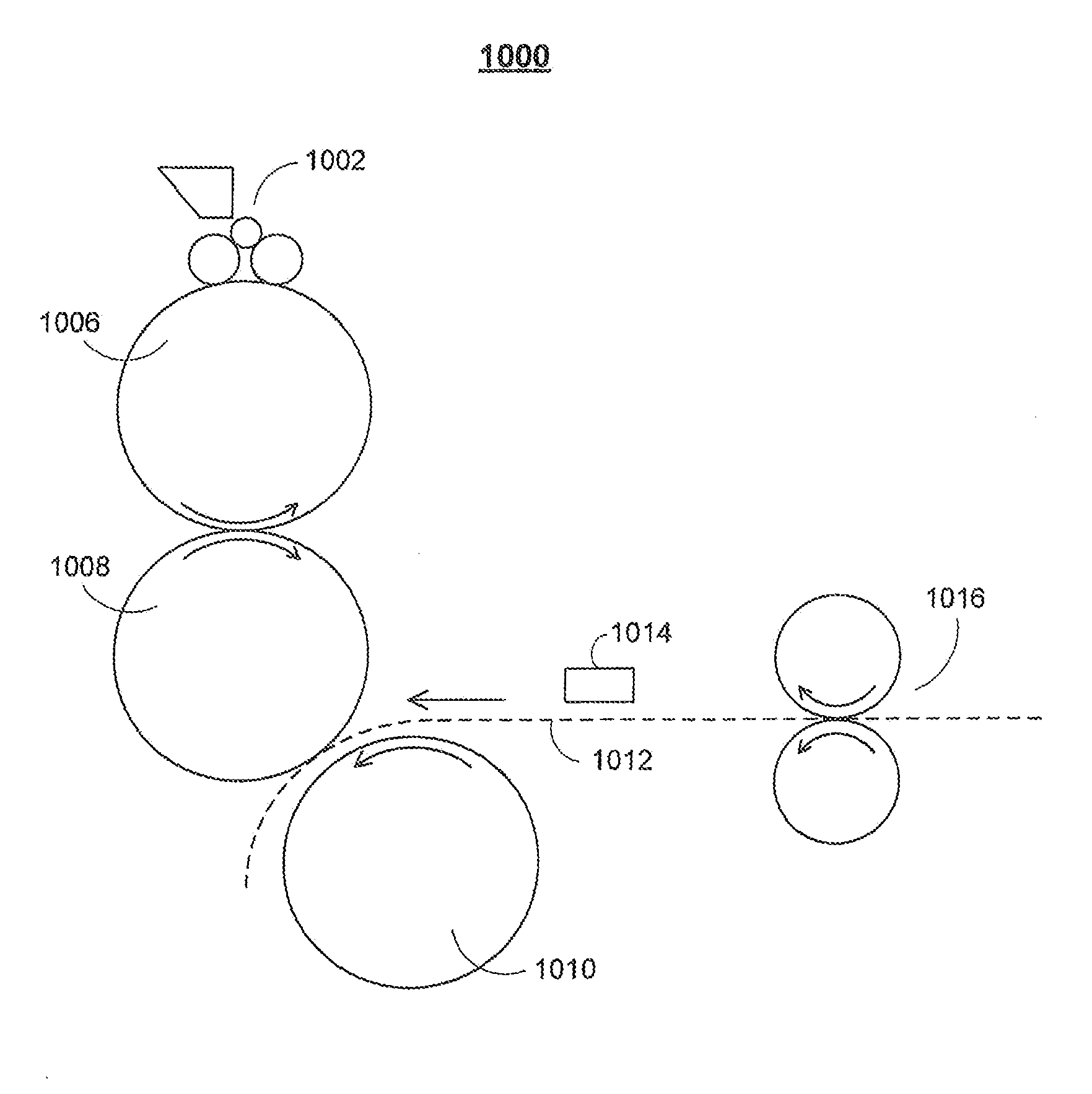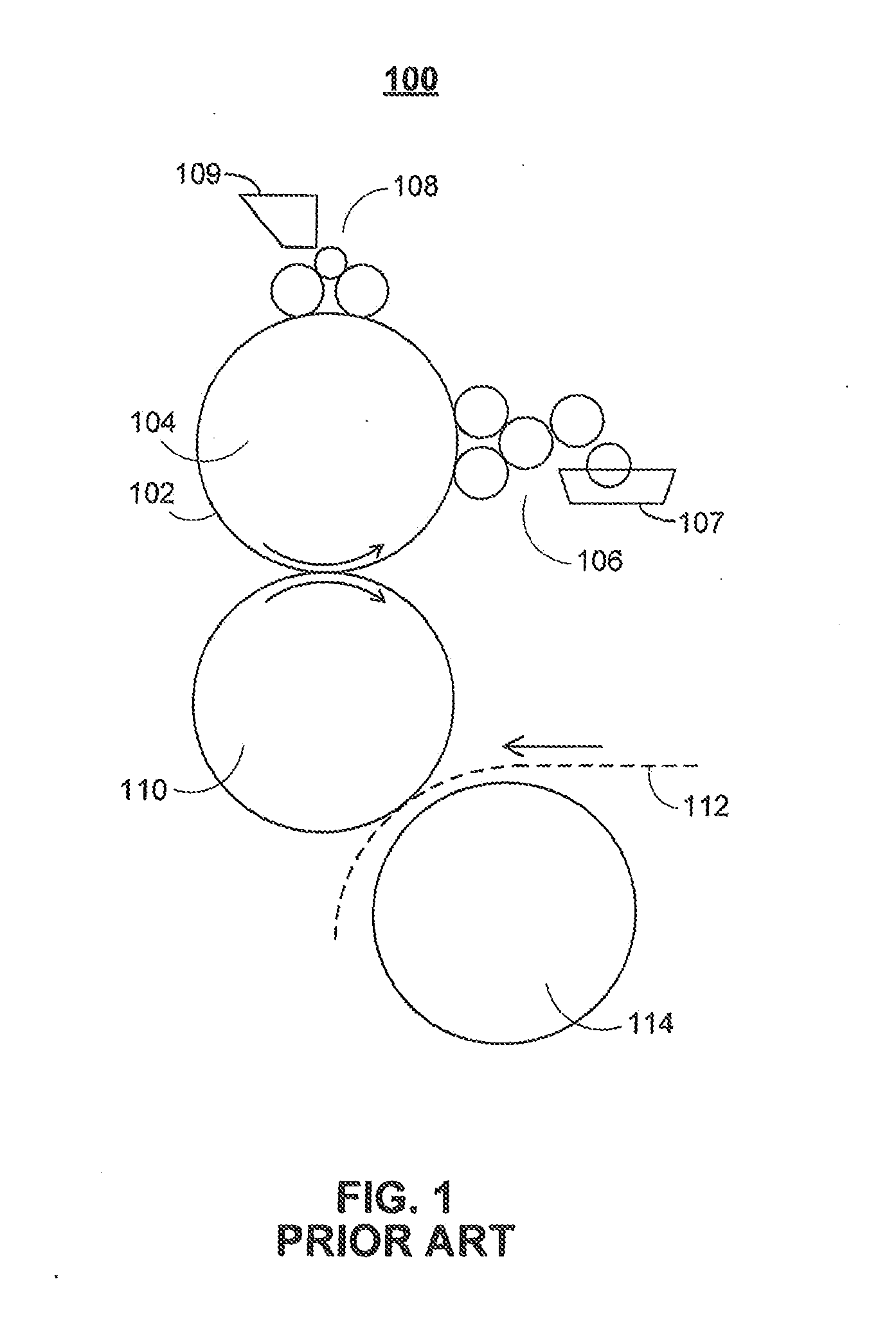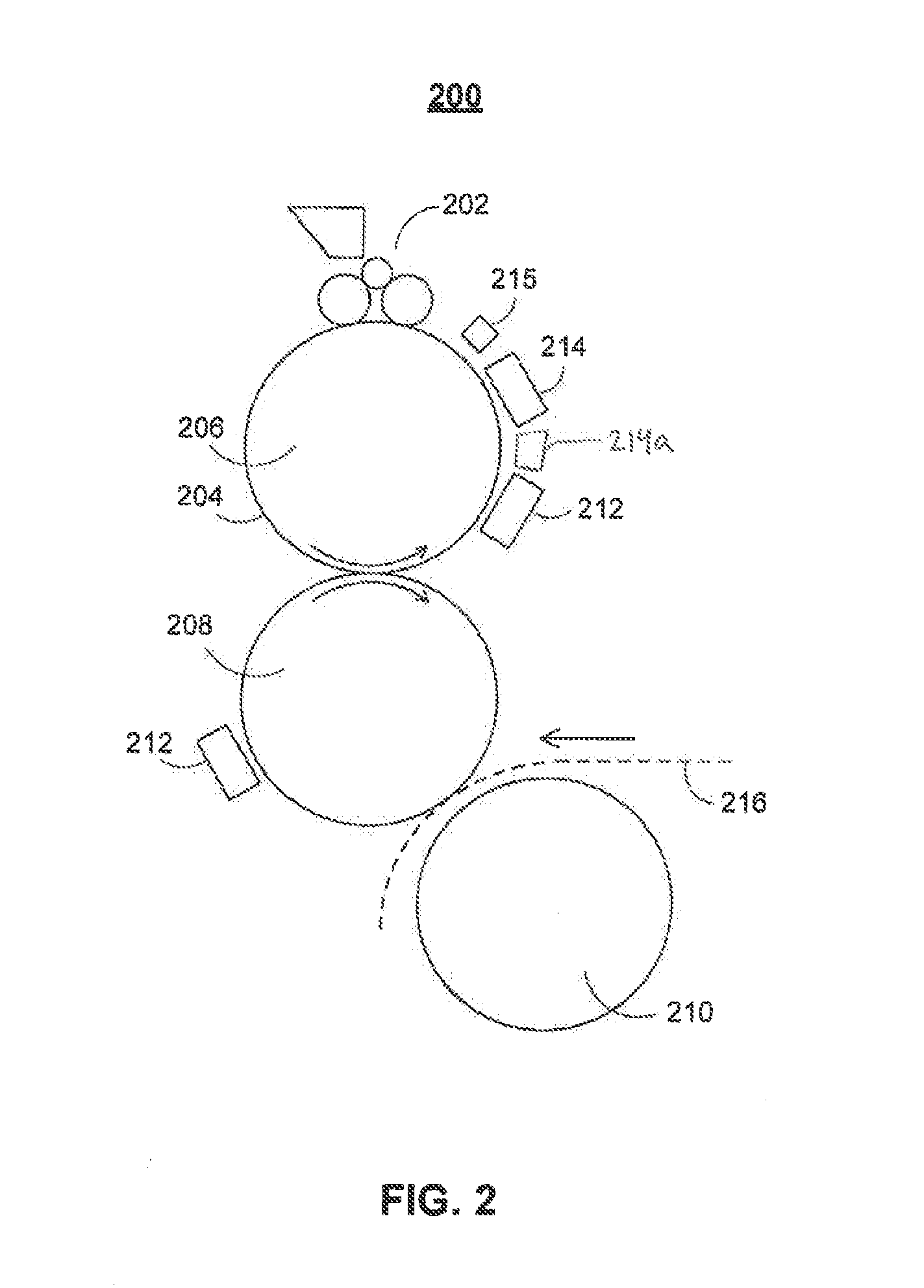Compositions Compatible with Jet Printing and Methods Therefor
- Summary
- Abstract
- Description
- Claims
- Application Information
AI Technical Summary
Benefits of technology
Problems solved by technology
Method used
Image
Examples
example 1
[0090]A blocking gating agent formulation useful in the present disclosure was prepared as follows:
[0091]8 wt % Sokalan® maleic acid / olefin copolymer (95% actives)
[0092]1 wt % SILWET™ 7200 siloxane block polymer
[0093]91 wt % water
example 2
[0094]A second blocking gating agent formulation useful in the present disclosure was prepared as follows:
[0095]30 wt % PEG 200
[0096]1 wt % Surfynol® 400 series
[0097]1 wt % Pluronic®
[0098]68 wt % water
example 3
[0099]A third blocking gating agent formulation useful in the present disclosure was prepared as follows:
[0100]15 wt % Joncryl® 50
[0101]10 wt % isopropyl alcohol
[0102]1 wt % SILWET™ 7200 siloxane block polymer
[0103]30 wt % PEG 200
[0104]44 wt % water
PUM
| Property | Measurement | Unit |
|---|---|---|
| Fraction | aaaaa | aaaaa |
| Percent by mass | aaaaa | aaaaa |
| Percent by mass | aaaaa | aaaaa |
Abstract
Description
Claims
Application Information
 Login to View More
Login to View More - R&D
- Intellectual Property
- Life Sciences
- Materials
- Tech Scout
- Unparalleled Data Quality
- Higher Quality Content
- 60% Fewer Hallucinations
Browse by: Latest US Patents, China's latest patents, Technical Efficacy Thesaurus, Application Domain, Technology Topic, Popular Technical Reports.
© 2025 PatSnap. All rights reserved.Legal|Privacy policy|Modern Slavery Act Transparency Statement|Sitemap|About US| Contact US: help@patsnap.com



